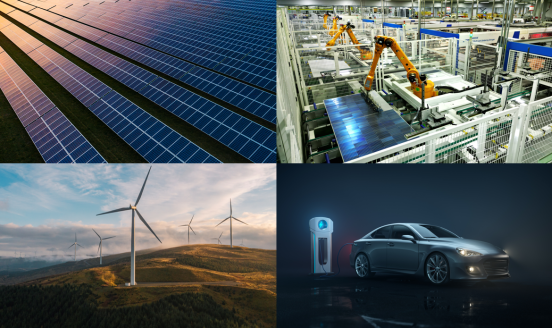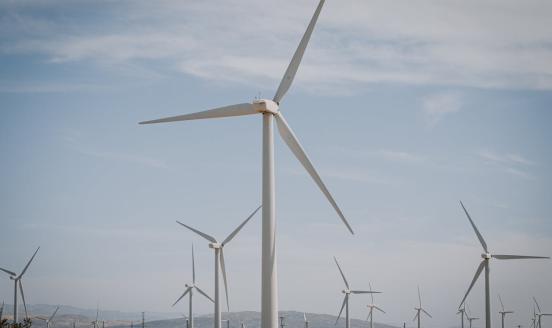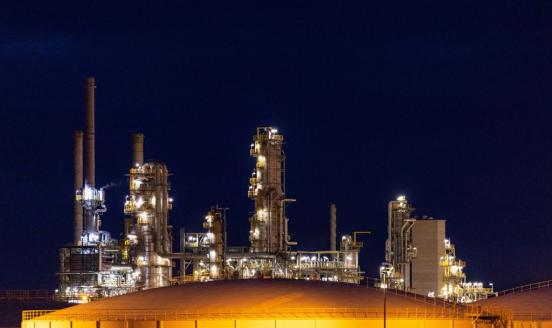An opportunity for natural gas in the eastern Mediterranean
After a decade of false starts, producers should grab the chance to co-operate as exporters.
The past few months have been busy for the eastern Mediterranean gas sector. After nearly a decade of speculation about the potential of the region’s resources, recent developments seem finally to have set it in the right direction.
In January, energy ministers from Cyprus, Egypt, Greece, Jordan and Israel, with representatives from Italy and the Palestinian Authority, met in Cairo to discuss regional co-operation in offshore gas.
The result was the Eastern Mediterranean Gas Forum (EMGF), a platform aimed at developing a regional natural gas market and taking advantage of existing liquefied natural gas (LNG) infrastructure in Egypt.
It followed an agreement in December between Egypt and Cyprus, who committed to creating and maintaining conditions for the construction of a pipeline connecting the Aphrodite gasfield in offshore Cyprus to Egypt’s LNG facilities.
There was another development on February 28, when ExxonMobil announced a new gas discovery in offshore Cyprus, more than doubling the country’s estimated offshore resources.
Those involved should now put aside any differences among them and grasp the opportunity at hand. The region’s gas saga started in 2009-2011, with the discovery of the Tamar and Leviathan fields off the shore of Israel, and the Aphrodite field off the shore of Cyprus. Various export options were progressively put on the table, from pipelines (to Turkey or Greece) to LNG plants (in Cyprus, Israel and Egypt). Expectations were great and the discoveries were promoted as a means to foster a new era of economic and political stability in the region.
However, initial expectations have since been damped. In Israel, a long debate on the management of gas resources caused uncertainty and delays in investment decisions. In Cyprus — where gas was welcomed as a godsend to relieve the country’s financial troubles — enthusiasm was cooled by successive downward revisions in the size of the discoveries. These developments raised scepticism over the whole idea that the region might become an exporter of natural gas.
However, hopes were revived in 2015 when the Italian energy company Eni discovered the Zohr gasfield off the shore of Egypt, the largest gas discovery ever made in the Mediterranean. In an unprecedented fast-track development, production at Zohr began in December 2017, helping Egypt recover its self-sufficiency in gas after turbulent years in which the country turned from a net exporter to a net importer. Zohr also marked a new phase of exploration in Egypt’s offshore waters, leading to further discoveries.
The significance of Zohr goes well beyond Egypt. Its proximity with other fields off Israel and Cyprus could allow for co-ordinated development and, thus, provide the economies of scale required to create competitive regional gas-export infrastructure.
Egypt already has LNG export infrastructure in Idku and Damietta with a capacity of 19bn cubic metres a year — but it currently sits idle. This could enable prompt export of gas from Egyptian, Israeli and Cypriot fields. Both plants could be expanded if need be.
For Israel and Cyprus, co-operating with Egypt is crucial. Building export infrastructure and developing fields is a circular problem. If there are political or commercial risks that no export infrastructure will be in place when production starts, a lot of money will be lost. If the field underperforms compared with expectations, expensive infrastructure will sit idle. (For example, the proposed Cypriot LNG Vasilikos project has an estimated cost of €5bn; similarly, the EastMed pipeline project connecting Israel, Cyprus, Greece and Italy is estimated to cost more than €6bn). Bringing together underused and scalable export infrastructure with several promising fields could be the key to unlocking untapped regional potential.
The most logical course is to create an eastern Mediterranean gas market based on the existing LNG infrastructure in Egypt, with benefits for all the regional players involved. This would also present an opportunity for Europe, where gas-import requirements are likely to grow in the coming years as domestic production declines, and where a large capacity to receive LNG already exists.
Such an approach would also offer eastern Mediterranean suppliers flexibility in terms of destination markets in the future, allowing them to serve Asian markets, for example, through Egypt’s LNG terminals.
Finally, a joint regional export scheme, through the Egyptian LNG facilities, could also provide a first opportunity to test commercial gas co-operation between Egypt, Israel and Cyprus. If successful, this co-operation could eventually scale up in the 2020s, should new discoveries be made in the region and should gas demand in Europe justify the construction of pipeline infrastructure.




